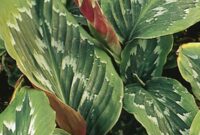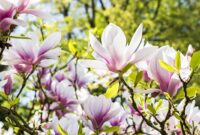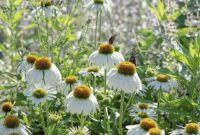Getting Started with Strap Leaf Caladiums
Strap Leaf Caladiums are an exquisite addition to any garden or indoor plant collection. Their vibrant, heart-shaped leaves and striking patterns can brighten up even the shadiest corners of your garden or living space.
Whether you’re a seasoned gardener or a beginner, growing these tropical beauties is an exciting endeavor.
Choosing the Right Location
Before you start planting your Strap Leaf Caladiums, it’s crucial to select the perfect location for them.
These plants thrive in shaded or partially shaded areas, making them an ideal choice for spots in your garden that receive filtered sunlight or no direct sun at all. Here’s what you need to consider:
- Light Requirements: Strap Leaf Caladiums prefer bright, indirect light. Avoid exposing them to harsh, direct sunlight, as it can scorch their delicate leaves. Under the dappled shade of trees or next to buildings, they’ll thrive.
- Indoor vs. Outdoor: Decide whether you want to grow your caladiums indoors or outdoors. For indoor cultivation, choose a spot near a bright window with filtered light. Outdoor gardeners should identify shady spots or consider using them as understory plants in woodland gardens.
- Soil Conditions: Caladiums do best in well-draining soil rich in organic matter. Ensure that the soil is loose and airy to promote healthy root development.
Preparing the Soil
Once you’ve chosen the right location for your Strap Leaf Caladiums, it’s time to prepare the soil. Proper soil preparation is crucial for their growth and vibrancy. Follow these steps:
- Soil Testing: Start by testing the soil’s pH. Caladiums thrive in slightly acidic to neutral soil, ideally with a pH range of 6.0 to 7.0. You can easily test your soil using a pH testing kit available at garden centers.
- Amendments: If your soil pH is too low or too high, amend it accordingly. Add lime to raise pH or elemental sulfur to lower it. Follow the package instructions for the right application rate.
- Organic Matter: Incorporate organic matter such as compost or well-rotted manure into the soil. This improves both soil structure and nutrient content, creating a favorable environment for your caladiums.
- Till the Soil: Use a garden fork or tiller to work the amendments into the soil to a depth of about 6 to 8 inches. This ensures that the improvements are distributed throughout the root zone.
With the right location and well-prepared soil, you’re now ready to plant your Strap Leaf Caladiums and watch them thrive in their new home.
.
Care and Maintenance of Strap Leaf Caladiums
Once you’ve successfully planted your Strap Leaf Caladiums, it’s essential to provide them with the care they need to thrive.
These striking plants, known for their vibrant foliage, can become the centerpiece of your garden or indoor space with proper attention.
Watering Needs
- Consistent Moisture: Strap Leaf Caladiums appreciate consistent moisture but dislike sitting in waterlogged soil. Water them regularly to keep the soil evenly moist but not soggy.
- Mulching: Applying a layer of mulch around your caladiums can help retain soil moisture and regulate temperature. Mulch also acts as a weed barrier, keeping the area around the plants clean and tidy.
- Watering Schedule: In warmer months, caladiums may require more frequent watering. During hot, dry spells, consider watering deeply in the morning or evening to prevent stress from dehydration.
Fertilizing Tips
- Balanced Fertilizer: Feed your Strap Leaf Caladiums with a balanced, slow-release fertilizer. Look for a formulation like 10-10-10 or 14-14-14, which provides essential nutrients for healthy growth.
- Application Frequency: Apply fertilizer according to the manufacturer’s recommendations, typically every 4-6 weeks during the growing season. Avoid over-fertilizing, as it can lead to excessive foliage growth at the expense of tuber development.
- Micronutrients: Caladiums may benefit from micronutrient supplements, especially if your soil lacks certain elements. Iron and magnesium are essential for vibrant leaf color, so consider using a fertilizer that includes these micronutrients.
Pruning and Deadheading
- Pruning: Regularly trim any yellowing or damaged leaves to maintain the plant’s appearance. Use clean, sharp scissors or pruning shears to make clean cuts.
- Deadheading: Remove spent blooms (deadheading) to encourage continuous leaf growth. This prevents the plant from diverting energy into seed production.
- Pinching: Pinch off the tips of young caladium plants when they have a few leaves to encourage bushier growth.
Dealing with Pests and Diseases
- Common Pests: Keep an eye out for common pests like aphids, mealybugs, and spider mites. If detected, treat your caladiums with insecticidal soap or neem oil.
- Fungal Issues: Caladiums can be susceptible to fungal diseases, especially in humid conditions. Avoid overhead watering and provide adequate spacing between plants to improve air circulation.
- Preventative Measures: To prevent pest and disease problems, practice good garden hygiene, avoid overcrowding, and inspect your plants regularly.
By following these care and maintenance tips, you can ensure that your Strap Leaf Caladiums remain healthy and vibrant throughout the growing season.
.
Seasonal Care and Overwintering of Strap Leaf Caladiums
Proper seasonal care is essential for the health and longevity of your Strap Leaf Caladiums.
These tropical beauties require attention and adjustments throughout the year to ensure they thrive in different weather conditions.
Seasonal Care
Spring (March – May)
As spring arrives, your Strap Leaf Caladiums will begin to emerge from their dormant period. Here’s what you should do:
- Resume Watering: Gradually increase watering as the weather warms up and the plants start to grow. Maintain even moisture levels.
- Fertilize: Apply a balanced, slow-release fertilizer according to package instructions to provide essential nutrients for new growth.
- Inspect for Pests: Check for any signs of pests or diseases and take appropriate measures if needed.
Summer (June – August)
Summer is the peak growing season for Strap Leaf Caladiums. Here’s how to care for them during this time:
- Watering: Continue to provide consistent moisture, especially during hot and dry spells.
- Fertilizing: Stick to your regular fertilization schedule, ensuring that your caladiums have the nutrients they need for lush foliage.
- Shade: In regions with scorching summers, consider providing some afternoon shade to protect your caladiums from excessive sun.
Fall (September – November)
With the arrival of fall, it’s time to prepare your caladiums for dormancy:
- Reduce Watering: As the weather cools, gradually reduce watering to allow the plants to naturally enter dormancy.
- Fertilizing: Discontinue fertilization as the growth rate slows down.
- Lift Bulbs: In regions with freezing winters, consider lifting the caladium bulbs and storing them indoors for the winter. Dry the bulbs thoroughly before storage.
Winter (December – February)
During the winter months, your Strap Leaf Caladiums will be dormant. Here’s how to care for them:
- Indoor Storage: If you’ve lifted the bulbs, store them in a cool, dry place, away from frost and direct sunlight.
- Minimal Watering: Only provide minimal moisture to prevent the bulbs from drying out completely.
Overwintering Indoors
For regions with harsh winters, overwintering your caladiums indoors is a smart choice. Here’s how to do it:
- Prepare Bulbs: Before storing them, remove any remaining soil from the bulbs and let them air dry for a few days.
- Storage Containers: Place the dry bulbs in a breathable container such as a mesh bag or paper sack. Avoid sealing them in airtight containers.
- Storage Location: Store the bulbs in a cool, dark location with temperatures between 50°F and 60°F (10°C – 15°C).
- Check Periodically: Periodically check the bulbs during their dormancy to ensure they are not drying out or showing signs of rot.
By following these seasonal care guidelines and properly overwintering your Strap Leaf Caladiums, you can ensure their health and vibrant return when the next growing season arrives.
With some patience and attention, these beautiful plants will continue to grace your garden for years to come.
.
Enjoying the Beauty of Strap Leaf Caladiums
Strap Leaf Caladiums are not just garden plants; they’re living artworks that can transform any space into a vibrant and visually stunning haven.
Their striking foliage, available in a plethora of colors and patterns, makes them a popular choice among garden enthusiasts and indoor plant lovers alike. In this article, we’ll explore various ways to fully enjoy the beauty of Strap Leaf Caladiums and make them a focal point in your gardening and decor endeavors.
Showcasing Varieties
Strap Leaf Caladiums come in a wide range of varieties, each with its unique charm.
From the classic ‘White Queen’ with its white and green leaves to the dramatic ‘Red Flash’ with its deep red veins, there’s a caladium variety for every aesthetic preference. Consider these tips:
- Mix and Match: Experiment with different caladium varieties to create eye-catching combinations of colors and patterns in your garden or indoor displays.
- Highlight Focal Points: Use caladiums strategically to draw attention to specific areas in your garden, such as around a favorite bench or at the entrance of your home.
- Container Gardens: Grow caladiums in decorative pots and containers to easily move them around your garden or patio, creating focal points wherever needed.
Creative Garden Designs
Caladiums can be integrated into various garden designs to enhance their visual impact. Here are some creative ideas:
- Tropical Paradise: Design a tropical-themed garden using caladiums alongside other lush, exotic plants like ferns, palms, and elephant ears. Add decorative elements like bamboo or tiki torches for an authentic feel.
- Shade Garden Beauty: In shaded areas where many plants struggle, caladiums thrive. Create a serene shade garden by planting caladiums alongside hostas, ferns, and astilbes.
- Edging and Borders: Use caladiums to edge garden beds and borders for a pop of color and an elegant, polished look.
Container Gardening
Caladiums are exceptionally well-suited for container gardening. Whether you have a small balcony or a spacious patio, here’s how to make the most of them in containers:
- Select the Right Containers: Choose pots or containers with good drainage and ample space for the caladium bulbs or tubers to grow comfortably.
- Arrangement Ideas: Create stunning arrangements by pairing caladiums with complementary plants like impatiens, begonias, or ferns. Mix heights, colors, and textures for a visually appealing display.
- Seasonal Changes: Rotate your containers seasonally, swapping out caladiums for other plants when the weather turns cold to keep your outdoor space vibrant year-round.
Troubleshooting and FAQs
As you enjoy the beauty of Strap Leaf Caladiums, you might encounter some common issues or have questions. Here are answers to a few frequently asked questions:
- Why are my caladium leaves turning yellow?: Yellowing leaves can be a sign of overwatering or insufficient light. Adjust your care routine accordingly.
- Can I grow caladiums indoors?: Yes, caladiums can thrive indoors if provided with the right lighting and care. Place them near a bright, indirect light source and maintain consistent moisture.
- How do I store caladium bulbs for the winter?: To overwinter caladiums, dig up the bulbs in the fall, let them air dry, and store them in a cool, dark place until spring.
By embracing the versatility and charm of Strap Leaf Caladiums, you can elevate your gardening and decorating endeavors, creating spaces that burst with color and vitality.
Whether you’re a seasoned gardener or just starting, these plants offer endless opportunities for beauty and creativity.



